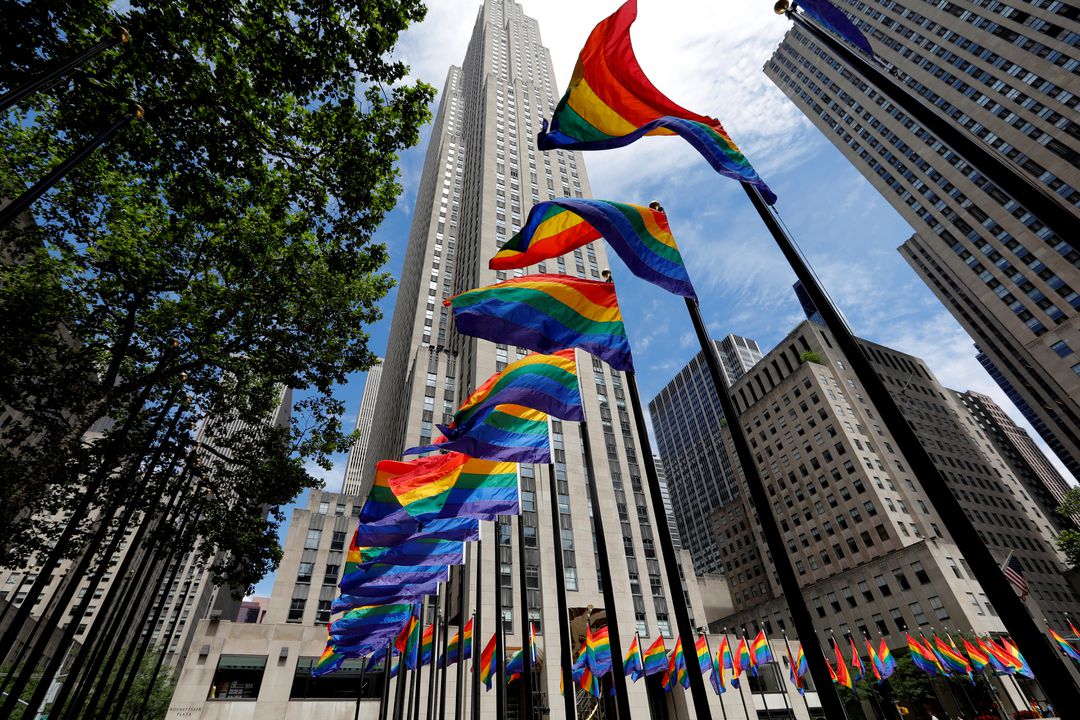The history of Gay Pride

A few minutes every morning is all you need.
Stay up to date on the world's Headlines and Human Stories. It's fun, it's factual, it's fluff-free.
The parade in New York City on June 28, 1970, known as Christopher Street Liberation Day, is generally credited with being the first Gay Pride parade.
- June is Gay Pride Month, not just in the United States, but in countries all around the world.
- In New York City, San Francisco, Boston and numerous other cities, the month will be filled with festive events both led by and celebrating the Lesbian, Gay, Bisexual, Transgender and Queer (LGBTQ) community.
- In the half-century since the first Gay Pride parade took place in New York City, the celebration has gone mainstream and been embraced by the public at large.
- The story of how Gay Pride got started rooted is actually one of the darkest moments in the LGBTQ community’s history – something known as the “Stonewall Riots.”
- Gay Pride Month can feel almost bittersweet for many of the people old enough to remember the Stonewall Riots, which took place during a time when homosexuality was illegal in the US.
The first Gay Pride parade
- Though members of the community are still fighting for rights, much of the legal discrimination against LGBTQ people that once existed in the US has ended.
- That’s largely due to the work of LGBTQ activists and the push to make the community more visible through events like Gay Pride.
- Long before June was deemed Gay Pride Month, the phenomenon was basically initiated with many different parades around the country on June 27 and 28, 1970.
- Chicago, San Francisco and New York City were the main cities to hold demonstrations that year.
- Even though other cities had parades and events a day earlier, the parade in New York City on June 28, 1970 known as Christopher Street Liberation Day, is generally credited with being the first Gay Pride parade. That’s because it was on Christopher Street in the Manhattan neighborhood of Greenwich Village that events lit a fuse for the gay rights and acceptance movement.
What were the Stonewall Riots?
- A year earlier, on June 28, 1969, the Stonewall Inn was raided by the police. That’s because homosexual acts were illegal at the time and the Stonewall Inn was a well-known hangout for gays, lesbians, transgender people and others.
- Early on Saturday, June 28, police raided the Stonewall Inn, often using force and violence to arrest employees and kick out the patrons.
- This wasn’t the first time the bar had been raided. Fed up with the harassment, many of the patrons didn’t leave but fought back against the police.
- The police, not expecting the resistance, attempted to barricade themselves in the bar, but the crowds broke through and the bar was set on fire in the ensuing conflict.
- Although police reinforcements arrived and effectively broke up the crowd, riots continued for the next few days. That’s why the events are also known as the Stonewall Uprising.
Gay Pride after COVID-19
- Last year was the 50th anniversary of Gay Pride, which is why it was such a major disappointment for many people that, due to the COVID-19 pandemic, most events and parades were canceled.
- This year, with millions of Americans vaccinated, cities are gearing up to hold public celebrations yet again.
- The list of cities that are holding Gay Pride events throughout the month is long and includes almost all of the English-speaking world.
- While Gay Pride Day is officially June 28, if you’re in the mood to celebrate, you will almost certainly be able to find events taking place every day of the month.
- New York City’s Gay Pride parade will take place on Sunday, June 27.
Have a tip or story? Get in touch with our reporters at tips@themilsource.com




Comments ()